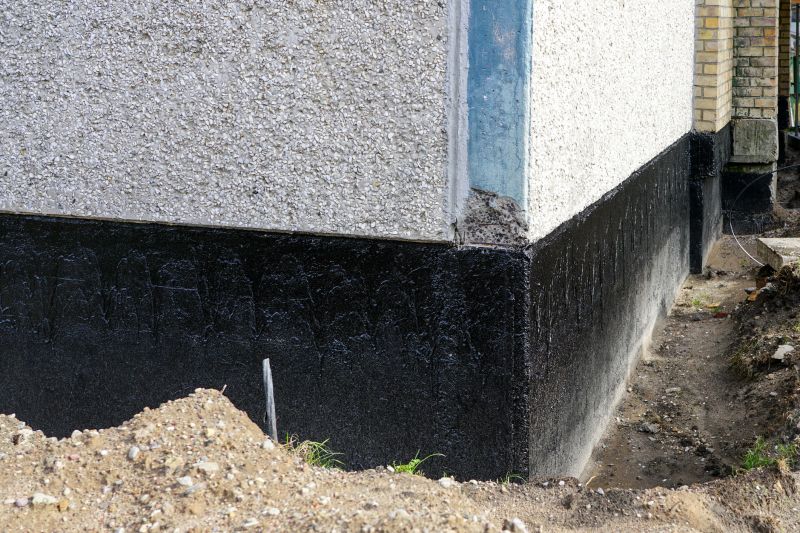Top Waterproofing Products for Reliable Protection
Discover the leading waterproofing solutions designed to safeguard your property from moisture and water damage effectively.
 Waterproofing products are essential for protecting structures, foundations, and surfaces from water intrusion and damage. They come in a variety of forms to suit different needs, whether for residential, commercial, or industrial applications. Proper selection and application of waterproofing materials can help prevent issues like leaks, mold growth, and structural deterioration, ultimately extending the lifespan of buildings and surfaces.
Waterproofing products are essential for protecting structures, foundations, and surfaces from water intrusion and damage. They come in a variety of forms to suit different needs, whether for residential, commercial, or industrial applications. Proper selection and application of waterproofing materials can help prevent issues like leaks, mold growth, and structural deterioration, ultimately extending the lifespan of buildings and surfaces.
Top Overall Option
Versatile Waterproofing Membrane
A high-quality, flexible membrane that can be applied to a variety of surfaces including foundations, roofs, and walls. It offers durable, seamless protection against water penetration and is suitable for both DIY projects and professional installations. Its ease of application and reliable performance make it a popular choice for diverse waterproofing needs.
Types of Products For Waterproofings
Liquid Waterproofing Coatings
Fluid coatings that form a seamless, waterproof layer on surfaces such as roofs, decks, and basements. They are easy to apply with brushes, rollers, or spray equipment.
Sheet Membranes
Pre-formed sheets made from bituminous, rubber, or plastic materials that act as a barrier against water ingress. Ideal for foundation and roofing applications.
Bituminous Coatings
Thick, tar-like coatings that adhere well to concrete and masonry surfaces, providing a durable waterproof layer.
Silicone Sealants
Flexible sealants used to seal joints, cracks, and seams in building envelopes to prevent water leaks.
Polyurethane Coatings
Highly elastic coatings suitable for surfaces exposed to movement, offering excellent waterproofing and UV resistance.
Cementitious Waterproofing
Waterproof coatings based on cement that are easy to apply and ideal for underground or below-grade structures.
Acrylic Waterproof Coatings
Water-based coatings that provide flexible, breathable barriers suitable for roofs and walls.
Crystalline Waterproofing
Chemical treatments that penetrate concrete to form internal water barriers, ideal for foundations and tunnels.
Rubberized Coatings
Flexible, rubber-like coatings that provide waterproof protection for roofs, decks, and ponds.
Waterproofing Paints
Specialized paints that add a waterproof layer to walls and surfaces, often used in combination with other systems.
Drainage Boards
Protective layers that facilitate water drainage away from foundations, reducing hydrostatic pressure.
Sealants and Gaskets
Materials used to seal joints, penetrations, and gaps to prevent water leaks in building assemblies.
Waterproofing Tapes
Self-adhesive tapes designed to reinforce seams and joints in waterproofing membranes.
Waterproofing Admixtures
Additives mixed into concrete or mortar to improve their water resistance properties.
Waterproofing Collars
Devices used to seal around pipes and penetrations to prevent water leaks.
Spray-On Waterproofing
Sprayable coatings that create a waterproof barrier on large or irregular surfaces quickly.
Popular Choices
Flexible coatings that form seamless barriers, popular for roof and basement applications.
Commonly used for underground and foundation waterproofing due to their durability.
Versatile, elastic coatings suitable for roofs and ponds, offering reliable water resistance.
Easy-to-apply coatings preferred for below-grade structures and tank linings.
Highly elastic and UV resistant, suitable for surfaces exposed to movement or weather.
Flexible sealants used to seal joints and cracks in building envelopes.
Applied to walls and surfaces to add an extra layer of water resistance.
Help manage water flow around foundations, reducing pressure and dampness.
Chemical treatments that penetrate concrete, providing internal waterproofing.
Quick application for large surfaces, creating an effective waterproof barrier.
In Brunswick, Ohio, where seasonal weather variations can lead to moisture challenges, choosing the right waterproofing products is particularly important. From basement walls to roofing systems, there are numerous options designed to provide effective barriers against water infiltration. Understanding the different types of waterproofing solutions available can assist homeowners and contractors in making informed decisions tailored to specific project requirements.
Effective waterproofing often involves a combination of products and techniques. For example, liquid membranes can be applied to surfaces to create seamless barriers, while sheet membranes offer durable, pre-formed layers for larger areas. Sealants and coatings are also commonly used to reinforce vulnerable joints and cracks. Proper preparation, application, and maintenance are crucial to ensure the longevity and performance of waterproofing systems.
Whether you're undertaking a new construction project or seeking to improve existing waterproofing measures, selecting quality products suited to your environment and needs is key. Consulting with local suppliers in Brunswick can provide insights into the best products for your specific situation, ensuring your property remains protected against water-related issues over time.
Key Buying Considerations
- Identify the specific surface or structure that needs waterproofing to select the appropriate product type.
- Consider the environmental conditions, such as exposure to UV, temperature fluctuations, and moisture levels.
- Determine whether a flexible or rigid waterproofing solution is needed based on movement and structural dynamics.
- Evaluate the ease of application and whether DIY installation is feasible or professional help is recommended.
- Check compatibility with existing materials to ensure proper adhesion and performance.
- Review the product's drying and curing times to plan installation schedules accordingly.
- Assess the longevity and maintenance requirements of the waterproofing system.
- Ensure the product is suitable for the specific application, such as underground, roof, or wall waterproofing.
- Look for products with good adhesion properties to prevent peeling or cracking over time.
- Consider the safety and VOC content of the products, especially for indoor applications.
- Verify that the product complies with local building codes and standards.
- Determine if additional accessories like sealants, tapes, or drainage components are needed for a complete system.
- Review user feedback and ratings to gauge real-world performance and reliability.
- Estimate the total cost, including materials, labor, and potential future maintenance or reapplication.
- Consult with local suppliers or contractors in Brunswick for recommendations tailored to regional conditions.
